Donnie Vincent on the Best Hunting Gear, Including the 'Most Underrated' Footwear That's 'Deadly Quiet'
Donnie Vincent is many things. He’s an intrepid backcountry hunter whose exploits in the Alaskan wilderness were chronicled in Michael Easter’s best-selling book The Comfort Crisis. He’s a no-BS, tell-it-like-it-is spokesman for wildlife conversation that’s been featured on podcasts like the Joe Rogan Experience and MeatEater, as well as articles in venerated publications. He’s a biologist turned award-winning filmmaker whose work has changed the way millions of people think about hunting. He's arguably the best person to give advice on the best hunting gear available now.
“Good gear is a system of systems," Vincent says. "Your rain gear has to double as your tent because, if your tent fails, you still need shelter, just as your warm jacket, pants, layers, and socks have to double as your sleeping bag. These are the things I really believe in. These are the things I trust.”
We caught up with Vincent while he was working on a film project in South Dakota centered around the new Polaris Expedition side-by-side. Here are a few of the pieces he trusts with his life when he’s living out of a tent in the Arctic Circle for weeks at a time.
Men’s Journal aims to feature only the best products and services. We update when possible, but deals expire and prices can change. If you buy something via one of our links, we may earn a commission.
Best Hunting Boots: Steger Quetico Mukluks
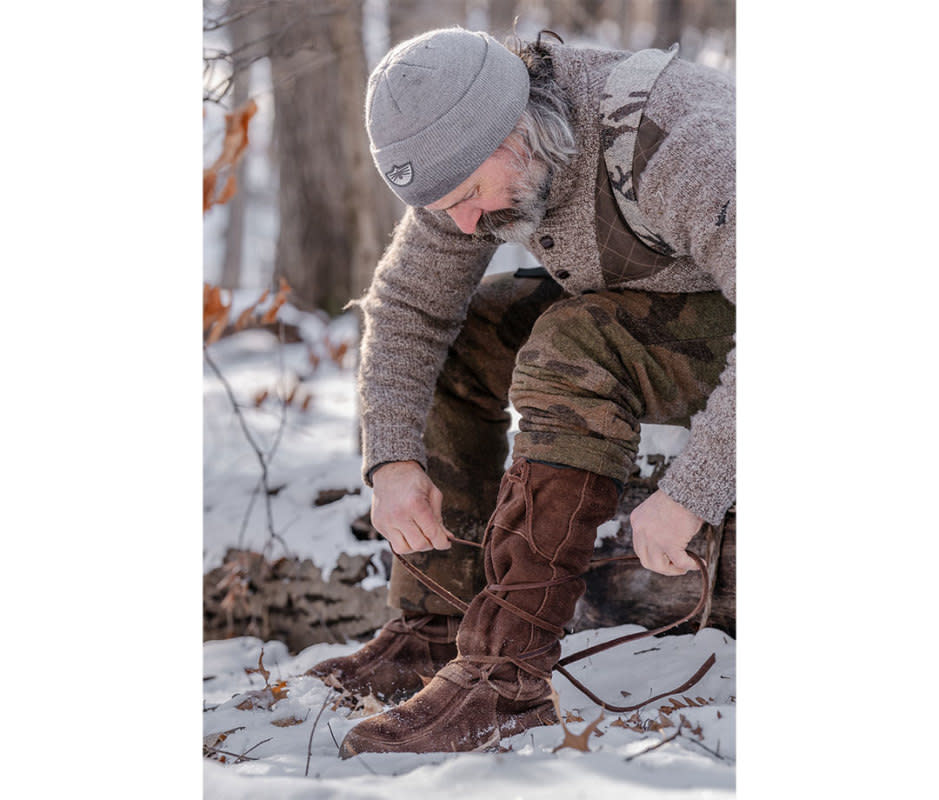
Sicmanta
“People write me all the time asking how I keep my feet warm while hunting deer all day in the freezing cold and I always point them to Steger Mukluks," Vincent says. "Anyone who loves to hunt, fish, or explore in the north country should own a pair."
Interestingly enough, Steger doesn’t even advertise its mukluks as hunting gear. That’s a shame, because between the tall full-grain leather upper, 9mm-thick wool liner and insole, and silent rubber outsoles, they’re a perfect fit for the task.
Vincent doesn't wear them all the time. If he's out hanging tree stands or doing anything athletic, he dons boots, but mukluks are the go-to when he's sitting for long bouts in the cold. They also last a very long time. He has a friend who's had the same pair for over 20 years.
"I use the Quetico model, because they have an extra-thick wool bootie inside to keep you warm and they’re silent to walk in," he says.
This is the kind of footwear you’d have found trappers on the frontier wearing back in the 1800s. They worked then and they work now.
"The sole is kind of like a rubberized house slipper, and they’re deadly quiet in the leaves," Vincent adds. "They’re the most underrated piece of footwear."

Best Longbow: St. Patrick Lake Longbows Mushin Styk
“The inherent quiet, observational learning that comes from being an archer is one of the greatest gifts; it’s life-changing," Vincent says.
He has two primary bows in his kit: a longbow and a compound.
His longbow is a Mushin Styk by Erik Hoff of St. Patrick Lake Longbows that’s built with a Yukon Takedown system for wilderness hunting and travel.
"The draw is silky smooth, holding and controlling your shot is something to behold, and watching the flight of the arrow as it finds its mark on the target is more pleasing than you can imagine," he says.

Best Compound Bow: PSE Mach 34

Sicmanta
The compound bow is the PSE Mach 34. The brand's carbon-fiber technology truly sets it apart from the pack.
"This is essentially PSE’s hand-made carbon riser, which is nothing short of a piece of art," Vincent says. "It’s warm in the hand, has maybe the best cam system in archery, and is built by a company made up of passionate archers."
Unlike other manufacturers who essentially glue together multiple carbon tubes to form a single shape, PSE employs expertly trained craftsmen who painstakingly hand-layer over 100 pieces of carbon to build a single riser. The result is an incredibly lightweight yet rigid bow, which, along with its beloved EC2 cam system, delivers one of the most accurate and consistent shot groupings money can buy.
"There are great bow companies with premium bows—Hoyt, Mathews, Bowtech—all of them have honest claims on engineering and performance, but PSE is up there with the best, if not leading,” Vincent adds.

Best Backpacking Sleeping Bag: Wiggy's Mummy Style Sleeping Bag and FTRSS Overbag
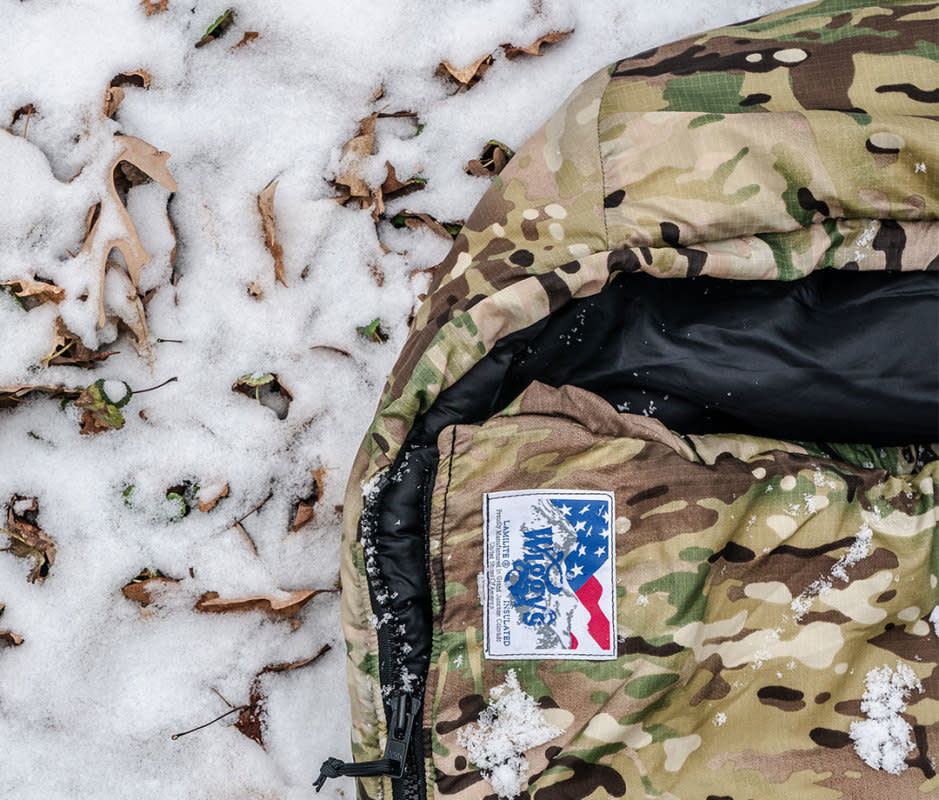
Sicmanta
“I took down sleeping bags on trips to Alaska for decades—ones with the outer layer treated to be water-resistant, ones with water-resistant down, you name it—but when it's wet, and I mean even a little, all down starts to fail," Vincent says. "In those conditions, they go from a puffy, toasty, loft-filled bag to absolutely miserable within a day, and they're very difficult to dry out in a tent."
Wiggy’s synthetic insulated sleeping bags are Vincent's top pick for cold, wet environments. The brand makes a robust system that pairs a 0-degree Mummy-Style Sleeping Bag with a 30-degree overbag, so you've got shelter that can protect against a bone-chilling -40 degrees.
The secret is a proprietary insulation called “Lamilite” that gives 25 percent more loft than other synthetic fills, and has virtually zero difference in loft or weight compared to a down bag of equal size. It won’t absorb moisture, so the bag never loses its loft in wet conditions.
"A good down bag can run you $800 alone, but you can get Wiggy’s full multi-bag system for under $500," Vincent says.
They’re a little heavier and bulkier, but the added weight is worth it.
"I’ve crawled into a Wiggy’s bag completely soaked in sweat and wet from crossing swift rivers with a heavy load, only to wake up bone dry," Vincent says. "Many of the bush pilots I know won’t even fly without their Wiggy’s in the plane…now that’s an endorsement.“


Best Hiking Boots: Hanwag Serius II GTX Boots

Sicmanta
“The first day I wore Hanwag Serius II GTX Boots was on a serious hunt where I had a boot from another company fail just days before," Vincent says. "On the first day, I hiked 10 miles with a heavy pack in some very steep country and they performed flawlessly with no blisters, which speaks volumes for a stiff boot. These are the best hiking boots I’ve ever worn."
Hanwag’s dedication to old-world craftsmanship and quality is something you have to see to believe. As one of the few bootmakers left in the world with both the requisite knowledge and machinery to produce double-stitched leather boots, you’d be hard-pressed to find a more durable or re-craftable boot at any price.
"I beat the absolute piss out of these things," Vincent says. "You’ll run out of tread before you break anything in the boot, and they’re completely re-soleable.”
Of course Hanwag has embraced modern manufacturing processes as well, which, along with the brand's obsessive dedication to fit, is the main reason why even its most technical alpine boots can be worn comfortably day in and out.
"Hanwag thinks of everything, including the way your foot rides in them when you’re in off-camber terrain carrying heavy weight," Vincent adds. "They’re absolutely bombproof, and the fit and finish are second to none."


Best Binoculars for Hunting and Best Spotting Scope: Maven B1.2 - 8X42 / 10X42 and S.1A - 25-50X80

Sicmanta
Great binoculars are for everyone, not just hunters. The closer you get to a subject, the more interesting it becomes. Vincent swears by Maven's B1.2 - 8X42 / 10X42 hunting binoculars and S.1A - 25-50X80 spotting scope.
"Good glass opens up the world around you," Vincent says, whether you’re watching birds at your feeder or watching a pack of wolves stalk a herd of caribou."
Vincent's used Maven since the brand's first year of business. The company makes world-class optics out of Japan (think binoculars, rangefinders, and rifle scopes) and sells direct to consumer, so its able to compete with top-of-the-line products coming out of Germany.
While flagship binos and spotting scopes from premier German companies like Swarovski, Leica, and Zeiss can run you anywhere from $3,000 to $6,000 a pop, the most expensive glass in the Maven catalog retails for under $2,000. Performance-wise, Maven optics deliver the goods the most skilled hunters need, and everything is backed by a lifetime warranty to boot.


Best Hunting Backpack: Barney’s Sport Chalet Freighter Frame and Pinnacle Pack
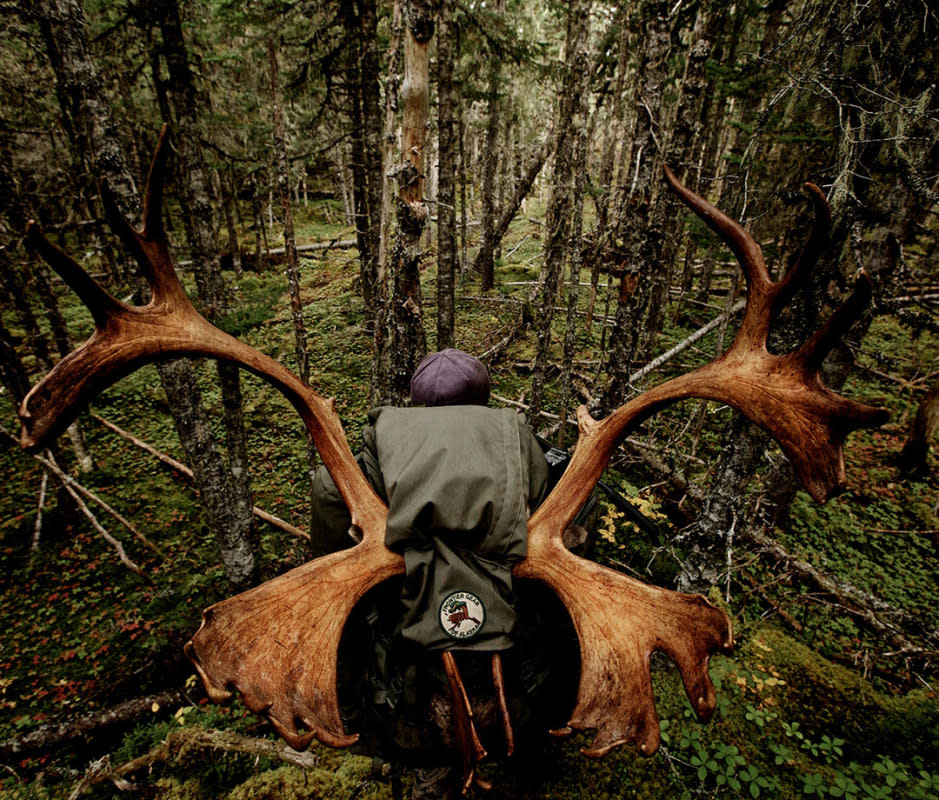
Sicmanta
Barney’s Pinnacle Pack paired with its Freighter Frame is a sturdy setup for serious hauls. "The system gives you the confidence for any backcountry hunt or camping trip," Vincent says. "This is an old-school external frame pack where paint chips in the coating are earned and it’s so badass."
Barney’s Sport Chalet is best described as a mountaineering store packed into a two-bedroom apartment that only carries the best hunting and backpacking gear in the world. Located in the heart of Anchorage, Barney’s sells all the premium brands like Sitka, Kifaru, and Stone Glacier, but it’s Barney’s custom in-house brand, Frontier Gear of Alaska that gets the nod from the most hardcore hunters.
The external frame packs, in particular, are regarded as the toughest on the planet by folks in the know, sporting small-batch quality and laser-focused features for the unique rigors of Alaska’s backcountry.
Vincent finds the Freighter Frame Pinnacle Backpack to be light, super comfortable, and inherently adaptable.
"Day hunting out of camp is no problem because the back can be pulled in to feel as if it’s not much more than a daypack," he explains. "When moving camp across miles of steep, broken terrain, this pack makes a heavy load feel like a fraction of reality; and, once you find success, well, it’s called a freighter for a reason."
You can lash antlers to the frame and there's even a meat shelf.
"Hunting in the backcountry is very difficult: Even the smallest of mountain ranges seem bigger than life and going ultra-lightweight means you’re not likely to accomplish a lot," Vincent says. "Trust me: elk, moose, caribou, or even sheep, this is a very good bag to check out.”


Best Rain Jacket: Grundéns Neptune 319 Commercial Fishing Jacket
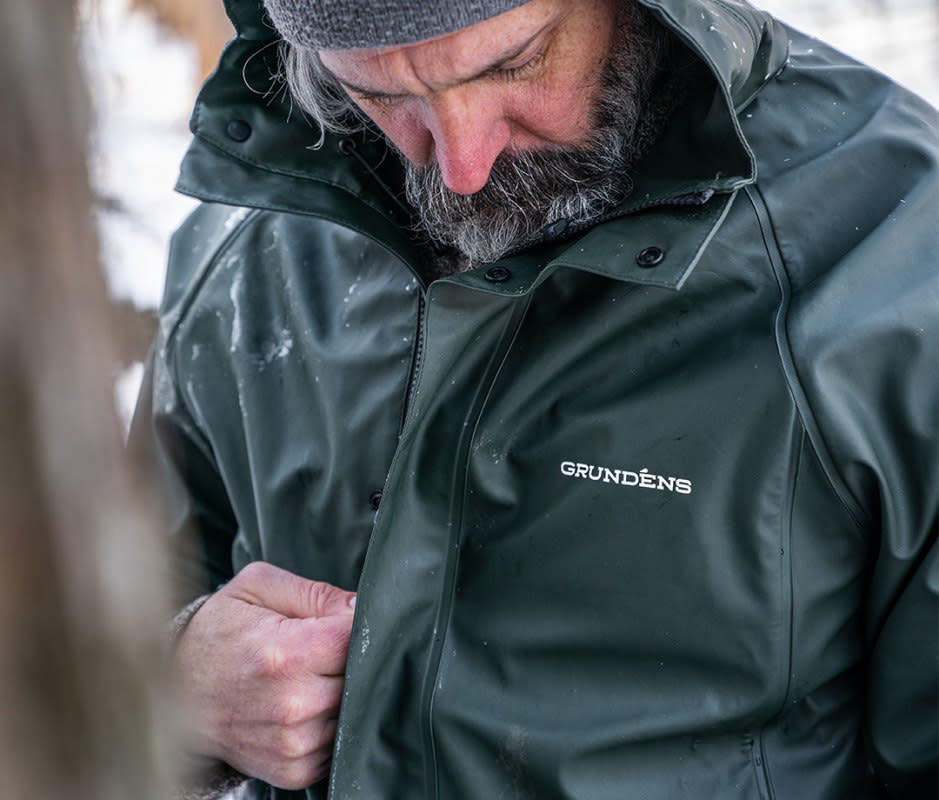
Sicmanta
“I’ve used all the most expensive rain gear out there, but hands down, the best I’ve ever used are Grundéns' PVC rain jacket and pants," Vincent says. "We’re talking about the kind of stuff you see dudes working on crab boats wearing."
As is the case with most of Vincent's kit, there’s a stark difference between what’s advertised to work, and what he’s found to be truly effective out in the field. Grundéns' rain gear isn’t meant to be breathable, it’s meant to be waterproof, which is what you want when you’re spending hours sitting still glassing for caribou, moose, or brown bears—or waiting out a storm without shelter.
"I learned the hard way about breathable rain gear, which is meant for occasional showers," he says. "I’ve worn very expensive breathable shells from all the best brands, but at the end of the day I’m soaked."
As an added bonus, a full set of Grundéns' old-school PVC gear—jacket and pants included—costs about a third of most “premium” rain jackets alone.

Best Tent for Camping: Seek Outside Teepees

Sicmanta
Vincent has used Seek Outside 8-Person Tipi for countless trips, but the true test was setting basecamp roughly 250 miles north of the Article Circle. He hunted caribou every day and found respite in this teepee come nightfall.
"Get the stove piping hot, cook up some ptarmigan (game bird) from the day's hunt, boil up some coffee, and you’d swear you were in a vacation cabin," he says.
The main advantage of a floorless teepee is that, unlike traditional tents, you get a ton of space without the weight penalty. In its lightest configuration, an eight-person Seek Outside Teepee weighs less than seven pounds, and that includes the tent, the pole, and all the stakes you need to secure it.
"When you get back to camp in a driving rain, you simply walk in rather than undressing outside," Vincent says. "The eight-man size is perfect for two to three guys, all their gear, and a full kitchen setup with a Winnerwell stove."
He switches over to a Hilleberg expedition tent in the windiest of conditions, but for anything short of the open tundra, this teepee handles whatever mother nature throws at it.
I’ve had these things in sustained 60 mph winds and 13 straight days of rain and all they have is a center pole. As with any tent, you must be thoughtful when picking a tent site and pitching it correctly, but once you get it down, this is one of the coolest shelters you’ll ever stay in.”

Best Hunting Knife: Benchmade Meatcrafter

Sicmanta
Vincent has three go-to Benchmade knives. His everyday carry is the 940 Osborne. It’s strong, easy to sharpen, holds an edge well, and the tanto tip has good workability and balance.
For general survival, Benchmade Anonimus is essential for wilderness camping. "Its non-stainless, tool-grade steel blade basically turns this knife into a hatchet," Vincent says. "This blade is a keeper with the look and function of a life-saver.” Stash it in your pack or truck.
For hunting, Benchmade Meatcrafter is the go-to for field-to-kitchen deboning and butchering. "This past fall I butchered two moose and a caribou with it before giving it any touch-up at all," Vincent says. It holds a hell of an edge for quite a long time. "I’ll be traveling with this little gem in my pack for as long as they make her," he adds.
Benchmade is arguably the most well-known knife manufacturer in the country sold everywhere from Amazon to REI. Still, Benchmade knives are trusted by die-hard guys like Vincent for a reason: The brand makes quality stuff that’s built to last a lifetime, and even offers free factory sharpening.

More Hunting Gear We Love
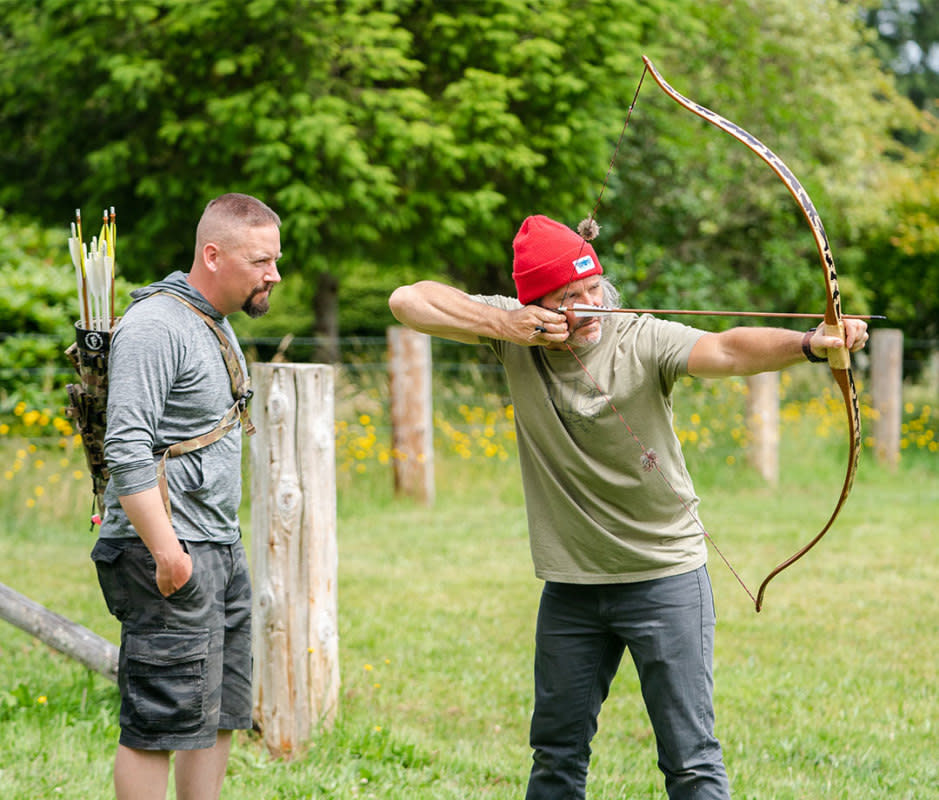
Sicmanta
“Being a hunter means mastering a weapon," Vincent says. That's true whether you're wielding a compound or traditional bow, a pistol, or a long gun. "It's essential to learn your craft inside and out and harness your determination. ShotIQ is a must for anyone who wants to master their mind in order to shoot a controlled shot."
Think of ShotIQ as a masterclass in marksmanship with in-person and online programs for bows, rifles, and pistols, led by one of the world’s greatest living coaches. Vincent's friend, Joel Turner, devised ShotIQ out of his own necessity as a police officer, having been pressed to make some very difficult shots in hostage situations.
Turner’s bona fides are undeniable: Before he launched ShotIQ, he spent decades as a patrol officer for the Yelm Washington Police Department, was the lead firearms instructor for the Thurston Country SWAT team, and taught all the rifle and pistol courses for the entire state of Washington’s SWAT teams. He’s been featured on just about every major hunting-friendly podcast out there, and thousands of shooters (myself included) can attest to the effectiveness of his method.
"He’s also trained one of the greatest archers in the world—his son, Bodie—who won every major indoor archery competition by the time he was 15 years old," Vincent says. "Whether you’re just learning a weapon or want to finally conquer the target panic that's ruining your shot, ShotIQ is an absolute must.”
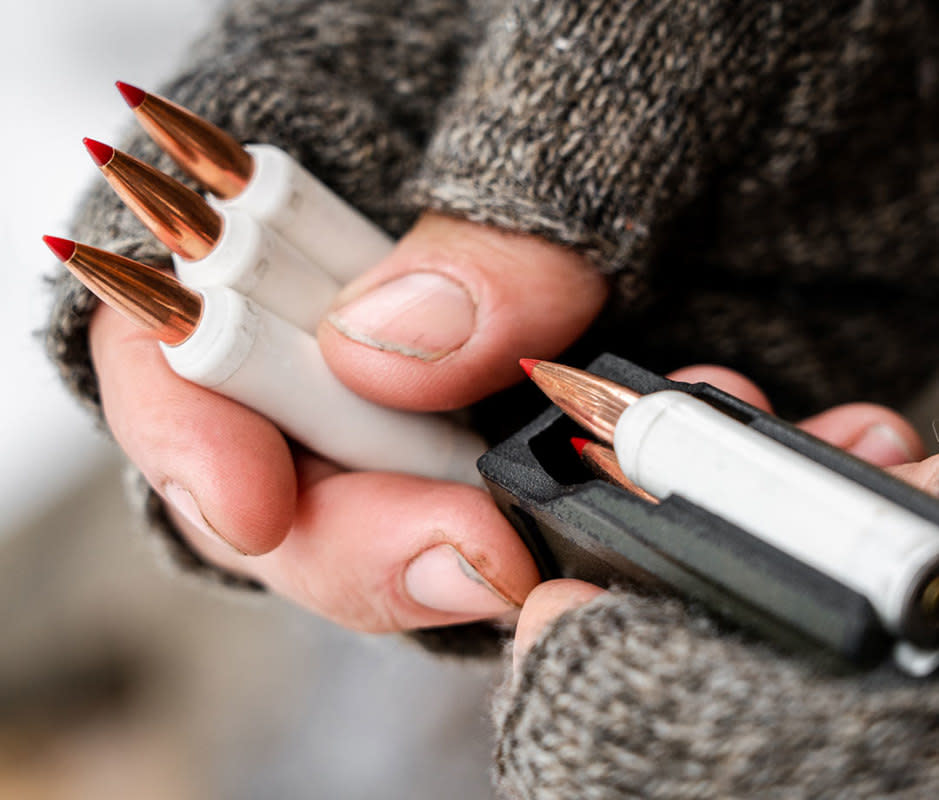
Sicmanta
“True Velocity makes composite-cased ammunition that defines state-of-the-art," Vincent says. "It’s 35 percent lighter than equivalent brass-cased ammunition and transfers almost no heat to the weapon because polymer is an insulator."
Lighter, more accurate, more efficient, and more consistent: These are all claims made by the folks at True Velocity, and after watching their jaw-dropping manufacturing process in action, we're inclined to take them at their word. Many hunters will also be pleased to learn that True Velocity makes its ammo here in the States at its Garland, TX, manufacturing plant.
"I’ve toured the manufacturing plant and fired thousands of their rounds through various gun platforms—everything from rotary-style machine guns to bolt guns—and this ammunition represents a paradigm shift from 150 years of technology," Vincent adds."
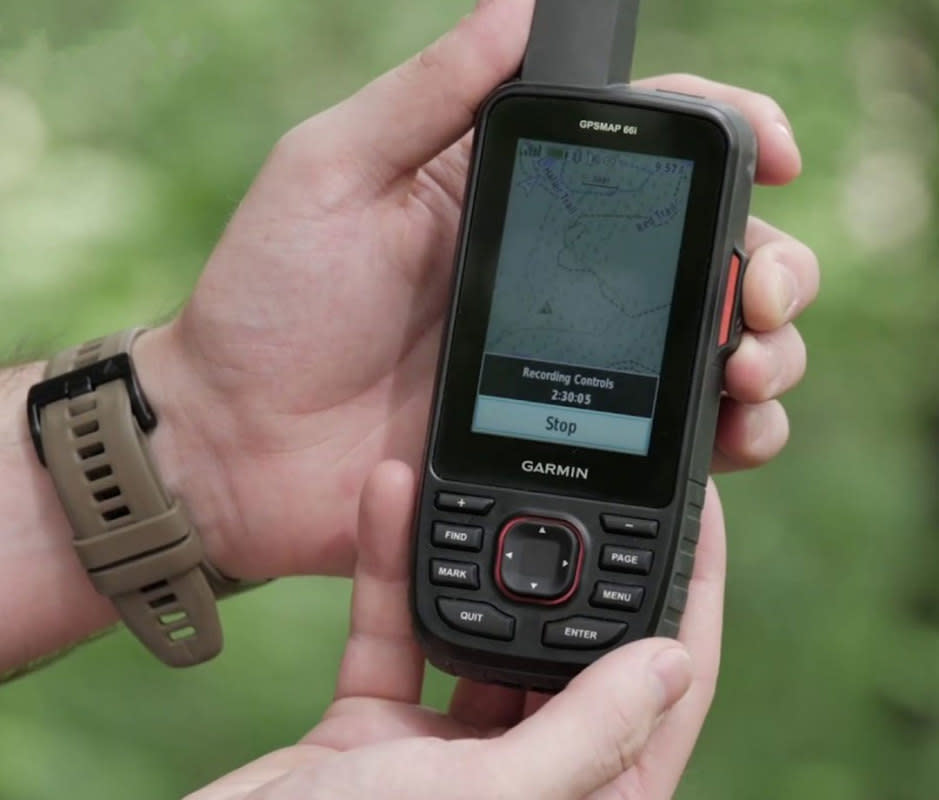
Courtesy of Garmin
Garmin is the first name in backcountry navigation and communication. Thruhikers swear by the inReach Mini, while adventure riders and overlanders lust after their Zumo XT. For Vincent, it's the GPSMAP 66i.
“This is easily one of my most important pieces of gear," Vincent says. He can download maps for an entire area, take notes, keep an eye on the weather, send out an SOS, and message with his crew and family.
"My mom had a bad heart event while I was recently in Alaska, but my dad was able to message me through my Garmin to tell me the news and keep me informed," he says. "That’s crucial because, depending on the weather, it’s going to take me anywhere from three to seven days to get back home for an emergency.”
Getting lost and getting injured are your two biggest concerns when you’re days from civilization, and a Garmin takes both issues into account.
![<p>Sicmanta</p><p>“I estimate I’ve probably sold about a million pairs of these damn things," Vincent jokes. "I’ll go someplace to hunt one year, and when I come back the next, everyone I see is wearing Fj?llr?ven pants. They’ve got stretch fabric, built-in gaiters, great pockets, a gusseted crotch, and a fantastic fit and finish...maybe the best pants I’ve ever worn."</p><p>In a world where just about every major outdoors manufacturer has doubled down on faster, lighter, and more “technical” garments, Fj?llr?ven goes the complete opposite direction by building gear from the toughest, longest-lasting materials possible.</p><p>"The G1000 material is so tough [on the <a href="https://clicks.trx-hub.com/xid/arena_0b263_mensjournal?event_type=click&q=https%3A%2F%2Fgo.skimresources.com%2F%3Fid%3D106246X1712071%26xs%3D1%26xcust%3DMj-besthuntinggear-kspurlock-0224%26url%3Dhttps%3A%2F%2Fwww.fjallraven.com%2Fus%2Fen-us%2Fmen%2Ftrousers%2Ftrekking-trousers%2Fkeb-trousers-m&p=https%3A%2F%2Fwww.mensjournal.com%2Fgear%2Fbest-hunting-gear%3Fpartner%3Dyahoo&ContentId=ci02d4fdc9a00025fb&author=Kurt%20Spurlock&page_type=Article%20Page&partner=yahoo§ion=Gear&site_id=cs02b334a3f0002583&mc=www.mensjournal.com" rel="nofollow noopener" target="_blank" data-ylk="slk:Keb Trousers;elm:context_link;itc:0;sec:content-canvas" class="link ">Keb Trousers</a>] I’ve worn them for weeks on Mexico’s Tiburon Island," he says. "Days on end, 100-degree heat, heavy packs, traversing mountainous terrain among endless cacti, and these pants function like no other.”</p><p>Bulletproof and insanely long-wearing, Fj?llr?ven's G-1000 cotton/poly blend is as reliable as an anvil and can even be impregnated with natural wax for lasting water- and wind-resistance.</p>](https://s.yimg.com/ny/api/res/1.2/QArVA8xP7moRKCDGeNzpRw--/YXBwaWQ9aGlnaGxhbmRlcjt3PTk2MDtoPTgxOA--/https://media.zenfs.com/en/men_s_journal_718/4dc9eb6e367412f1122a9beac38be927)
Sicmanta
“I estimate I’ve probably sold about a million pairs of these damn things," Vincent jokes. "I’ll go someplace to hunt one year, and when I come back the next, everyone I see is wearing Fj?llr?ven pants. They’ve got stretch fabric, built-in gaiters, great pockets, a gusseted crotch, and a fantastic fit and finish...maybe the best pants I’ve ever worn."
In a world where just about every major outdoors manufacturer has doubled down on faster, lighter, and more “technical” garments, Fj?llr?ven goes the complete opposite direction by building gear from the toughest, longest-lasting materials possible.
"The G1000 material is so tough [on the Keb Trousers] I’ve worn them for weeks on Mexico’s Tiburon Island," he says. "Days on end, 100-degree heat, heavy packs, traversing mountainous terrain among endless cacti, and these pants function like no other.”
Bulletproof and insanely long-wearing, Fj?llr?ven's G-1000 cotton/poly blend is as reliable as an anvil and can even be impregnated with natural wax for lasting water- and wind-resistance.
What We Look for in the Best Hunting Gear
Hunting gear needs to live at the crossroads of portability and durability. You can't afford for it to make transgressions because you're reliant on it to perform in high-stakes situations, extreme elements, and long stretches of time. We prioritize legacy brands that may not be the most readily available in big-box retail stores but have a storied reputation among hunters the world over.
Hunting gear like your tent, sleeping bag, and pack needs to be light but high-quality; you need multiple knives that hold their edge; hiking boots that provide support without chewing up your feet and mukluks with rubber soles for silent stalking; your clothing should be hard-wearing when the weather turns south, with outerwear comprising nylon or double-coated PVC polyester for true waterproofness; and, most importantly, you need reliable comms and navigation to get you out of sticky situations and keep you connected.
Why You Should Trust Us
Unlike most voices on social media these days, Vincent isn't just another armchair expert spouting second-hand advice for clout. He's has spent more time stalking grizzly bears and skinning caribou than most of us have spent standing in line for groceries, and he knows firsthand what works and what doesn’t when it comes to gear.
Solve the daily Crossword

